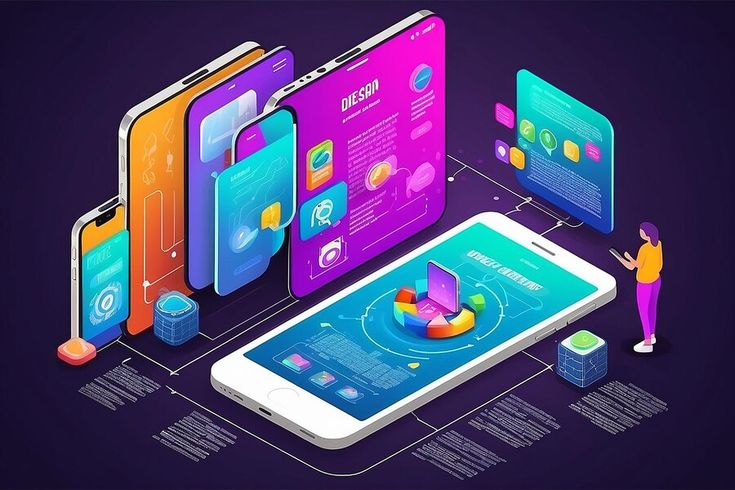AI-Powered Approaches to Software Quality Assurance
Testing techniques must also evolve in tandem with technological advancements. Quality assurance (QA) is currently being impacted by artificial intelligence (AI), which is transforming how organisations automate and test software. AI in software testing offers smart test automation and improved QA processes, works very well when developers face challenges with manual testing.
A user-friendly AI technique executes and records user interactions in a fraction of a second. This approach could consistently handle numerous test cases with simplicity. AI can improve productivity and streamline QA procedures. Their performance is greatly improved by AI-driven technologies, which results in remarkable QA improvements.
In this article, we will explore the role of AI in software QA. We will also cover some key approaches in AI-driven software QA. A few testing challenges that QA teams encountered will also be covered, along with the strategic approach to overcoming them. So let’s start by understanding what AI-powered software QA is.
Understanding AI-Powered Software Quality Assurance
Manual testing in the quality assurance lifecycle presents many underlying issues that lead to errors, test inconsistencies, test coverage, and time-intensive tests. Identifying trends, anomalies, and vulnerabilities in software at the initial stages and predicting potential issues, the integration of AI in the QA process accelerates innovation.
AI-powered approaches simplify quality assurance processes by providing comprehensive test coverage, risk management, and enhancing the quality while reducing operational overheads, all without compromising quality and compliance with best practices.
By finding the ideal balance between automated and manual quality analysis throughout software development workflows, an AI-enabled quality assurance approach offers more control over data. It enables QA professionals to concentrate more on difficult and important activities, such as root cause analysis and exploratory testing. By automating various QA tasks associated with manual testing, AI-enabled quality assurance can be described as an innovative approach to achieve higher performance and improved accuracy.
The Modern Role of AI in Software QA
Visual Testing and Monitoring
With a particular emphasis on improving visual testing and support proficiency, artificial intelligence expands the capabilities of testing platforms. AI’s incorporation into the Quality Assurance (QA) automation process is a useful tool for helping development teams create visually appealing software that is of high quality. Furthermore, the outcomes of regression testing efforts can be readily evaluated with the aid of technology.
Organising What is Needed
Every software development project needs a necessary collection process, but without AI-driven software testing, it can be a difficult task. This work includes handling specific tasks like keeping track of approvals, monitoring outcomes, and creating reports. By analysing predetermined key performance indicators, technology can help make complex software easier to understand.
Reusable Test Cases
Effective test case creation is difficult when utilising and reusing pre-existing software development resources. AI greatly simplifies tasks like quick application checks, gathering crucial data, monitoring loading times, and improving UI testing skills beyond expectations.
Identifying Errors
Errors in the code prevent testers from performing necessary software functions. It gets more difficult to identify problems in software as their number increases. However, by using AI in quality testing, testers may identify these problems more rapidly, enhance the testing procedure, and anticipate potential problems. Long-term cost savings and user satisfaction are both benefits of this feature.
Exploratory Testing
When AI is used in software testing, testers can achieve the required outcomes with fewer codes and resources. Artificial intelligence can handle multiple tasks at once, including learning, test design, and execution, and it works remarkably fast. With the aid of intelligent assistants, this technology effectively recognises testers and finds defects in the software.
Optimisation of Code Coverage
When AI is used in software testing, testers can achieve the required outcomes with fewer codes and resources. Artificial intelligence can handle multiple tasks at once, including learning, test design, and execution, and it works remarkably fast. With the aid of intelligent assistants, this technology effectively recognises testers and finds defects in the software.
Test Accuracy
It is simple for quality assurance professionals to make mistakes while employing manual testing techniques, particularly for repetitive tasks. They might, for instance, misinterpret the layout notation or name variables. Here, the use of AI in quality assurance can handle repetitive activities more effectively, which will ultimately increase the project’s accuracy level.
AI-Powered Approaches to Software Quality Assurance
AI-enabled testing to become more efficient, economical, and quick. Here are the most standard approaches for employing smart AI tools in QA.
Using AI-driven tools and platforms
A modern QA technique reduces the need for code writing for software testing, enabling testers without extensive coding experience to perform basic operations. This method is ideal for startups and small-scale projects without expensive top-tier testing experts. It also speeds up workflow by reducing routine code writing.
It involves analysing requirements, developing a valid strategy, running test cases, and evaluating results. AI-based tools and platforms make automation of testing processes easier, enhancing quality assurance. LambdaTest Test is the most preferred AI-driven platform for software QA teams.
LambdaTest is an AI testing tool that can conduct both manual and automated tests at scale. The platform allows performing real-time and automation testing on more than 3000 environments and real mobile devices.
The platform also offers Agent to Agent testing, allowing testers to test AI agents like chatbots and voice assistants. To verify their accuracy, dependability, and performance, it develops scenarios that are realistic and contextually aware.
The rise of automation AI tools is changing how QA engineers work. LambdaTest integrates AI-driven orchestration and failure analysis into its platform, allowing faster, more accurate validation across complex pipelines.
Setting test case priorities more efficiently
Setting priorities is a crucial part of the testing procedure. It improves the efficiency, consistency, and strategy of QA. QA teams now determine which test cases will be carried out manually and which automatically, as well as which tests should be run first and which may wait. Experts consider a variety of factors when determining priorities. This QA approach can be finished more quickly and effectively with the use of AI-powered solutions.
Automatically creating test cases
Complex architectures and ongoing updates, and improvements characterise modern applications. Therefore, it could be essential to build a large number of test cases to ensure that the software satisfies all needs and specifications to cover the code with tests as much as possible. It can take a long time to complete this manually, which is essential for any organisation. As a result, modern QA teams use algorithms to automatically create test cases. These procedures are managed by skilled testers who will eliminate inaccurate and irrelevant test cases suggested by AI.
Identifying potential problems
Finding bugs early on is crucial because failing to do so may increase technical debt. This is particularly relevant for teams that work under restrictive models. It might be challenging and resource-intensive to continuously spend a lot of time on thorough application testing. For this reason, certain organisations decide to utilise AI techniques to determine which code segments require testing first. The history of software updates, modifications, test results, problem logs, and user behaviour patterns is all used by machine learning models.
AI algorithms can predict which code sections and issues are most likely to arise based on all of this data. Furthermore, artificial intelligence can predict not only the areas of such issues but also their level of severity.
How AI Helps to Overcome Testing Challenges
Tight deadlines for release cycles
In today’s highly competitive world, each organisation must remain flexible and quick to create and update software before competitors. This necessitates the implementation of extremely short timelines. Tight timelines might lead to a situation where development takes up the majority of working hours, particularly if experts execute basic tasks manually. This might have a significant negative impact on the organisation.
However, by utilising AI in QA automation, these issues can be avoided. This simplifies the testing process by removing the need for experts to perform difficult tasks manually. It facilitates the quickest possible release, upgrading the application, and reducing the overall work cycle.
Limitations in skills and qualifications
Certain organisations do not have sufficient highly skilled testing experts. Finding and hiring the best QA professionals may be laborious and expensive. However, the adoption of AI applications can greatly simplify this process, allowing even inexperienced teams to complete simple testing tasks.
Professionals with lower levels of expertise can handle complex software they are not familiar with by utilising low-code AI testing solutions. AI applications make it easier and faster to perform quality assurance tasks without the need to create test code. AI may be an excellent aid for simple tasks.
Insufficient test coverage
Modern software is much more difficult due to its multi-layered, complex architecture and ongoing updates and improvements. It is quite tough to evaluate such complicated software, as well as time-consuming, particularly when done manually. The usage of multiple AI tools in tandem can assist in addressing this difficulty successfully.
Smart AI technology may be used to generate test cases automatically, test different functionalities without having to write code, and “predict” which code requires the greatest attention and test coverage owing to the highest chance of error. All of this reduces the amount of mundane tasks that testers have to do manually, thus speeding up the process of achieving the most comprehensive code coverage.
Poor test case prioritisation
Correctly setting priorities allows for more careful and efficient testing. Neglecting this part could lead to a poor quality assurance approach and poor outcomes, which could affect the software quality. A thorough review of the software requirements and specifications, organisational objectives, the history of application updates, typical user behaviour patterns, and other pertinent data is necessary to overcome this obstacle.
Conclusion
In conclusion, artificial intelligence has influenced every aspect of technology and is now a new trend. QA is one of the many processes that organisations are automating and optimising using smart solutions. Employing AI-driven tools in the testing process is advantageous. They aid in reducing time-to-market and speeding up the testing cycle, and reducing QA expenses. This enhances code quality, expands test coverage, and achieves several other positive results.
Organisations are employing AI models in several ways to automate, streamline, and expedite QA tasks. The most illustrative instances of its application include using AI algorithms to prioritise test cases and automatically creating test cases. They also prioritise low-code software testing approaches and use predictive models to predict the most likely issues. This makes it feasible to move beyond testing challenges. These challenges include inadequate test case prioritisation, excessively rigid deployment, lack of expertise, and poor test coverage.



